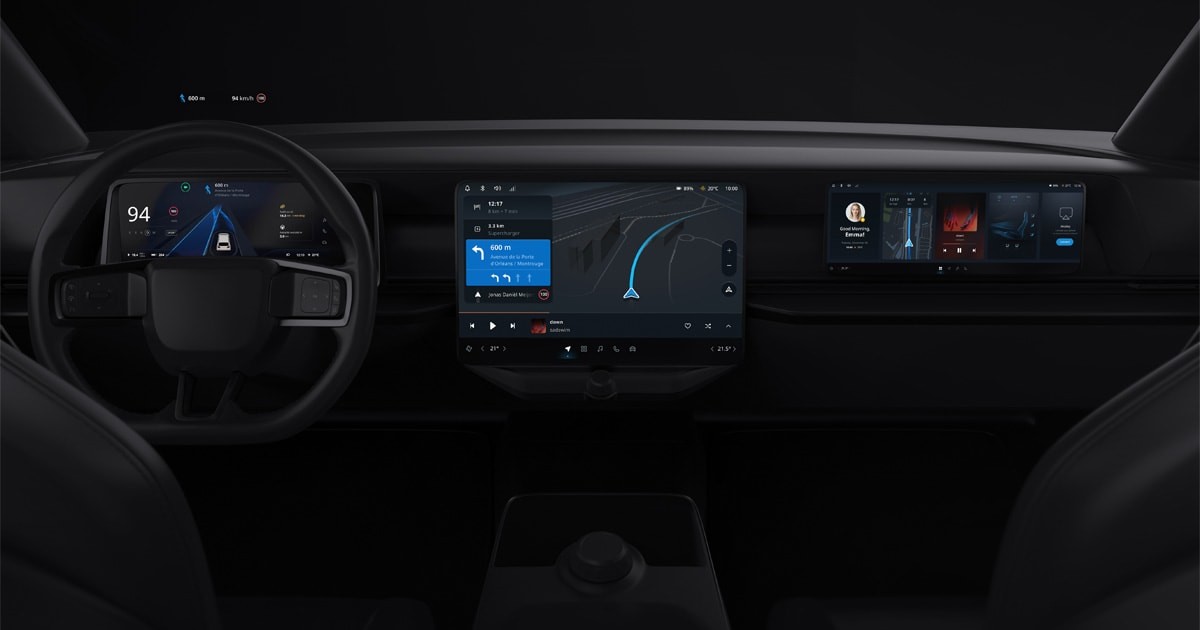
We rely on estimated times of arrival (ETAs) now more than ever. Whether we’re waiting on a package, food delivery or taxi ride, an accurate ETA is essential. The problem with ETAs is that they are hard to calculate accurately – and this can lead to both dissatisfied customers and disgruntled drivers. So, how can this be solved?
Inaccurate ETAs can lead to deliveries being too late or too early, which is frustrating for customers: Nobody wants a package to show up hours earlier than expected when they’re not home to receive it, or food to arrive so late it’s cold. When taxi or ridesharing journeys are delayed by unexpected traffic, it can lead to passengers being late for important appointments or even missing flights.
Why accurate ETAs matter to companies
Over or underestimating the ETA doesn’t just affect customer satisfaction, it can also be harmful to driver safety and satisfaction. Drivers might speed or take riskier maneuvers to make a tight ETA. When drivers aren’t confident about trip times, they’re not confident about your service.
All of this can seriously impact a company’s relationship with its drivers and customers. It’s possible that 14% of people claim that they won’t repeat business if their product was delivered late, as of 2018.

What goes into providing accurate ETAs
In 2019, TomTom interviewed ride-hailing and food delivery companies around the world, and they all confirmed that achieving accurate ETAs is one of the biggest problems in their business. What makes delivering accurate ETAs so difficult?
In short, there are many unpredictable variables to consider, such as traffic, driver behavior and the weather. Some companies attempt to smooth out ETAs with business model innovations, such as ghost kitchens – food preparation facilities used exclusively for delivery meals – which can produce meals in less time and are optimally located for delivery. However, such changes still don’t solve the issue at its source.
To fully understand why it’s so difficult to get reliable ETAs, we first need to understand what goes into providing accurate ETAs:
Accuracy depends on the situation: Commuters usually want the fastest ETA possible from door-to-door and may be unhappy if incidents occur on their journey that delay them. Ride-hailing and on-demand services on the other hand, prioritize predictability and reliability the most, — here, consistency is key. For example, accidents on small streets might have a greater time impact than a minor accident on a large interstate – if a road is completely blocked and the route suggests a detour, it can cause unhappy riders. By the same token, deliveries that occur early, before a customer may be home to accept them, can also reflect badly. As such, these companies need ETAs to meet a standard of reliability for the sake of their customers.
Perception of ETAs differs: Inaccurate ETAs also occur due to driver characteristics – some are fast or aggressive drivers while others may take more time or are conservative in their driving style. This makes ETAs even more varied and inaccurate depending on the driving style adopted.
Every company has different needs and preferences: There isn’t always a specific set of criteria that companies need to follow to achieve more accurate ETAs. Every company has different goals and must adapt according to their own resources. This is especially true in the on-demand industry, where most companies have their own algorithms for matching customers and deliveries to drivers and then have unique pickup and drop-off processes that can also affect ETA. These algorithms are the “secret sauce” behind route and ETA planning and perform extremely complex calculations that companies own and may vary from business to business.
The ingredients to accurate ETAs
Luckily, calculating precise ETAs isn’t entirely out of a business’ control. While there are several uncontrollable variables that affect an ETA, there are some things that companies can do to better predict and control travel times. Here’s how:
Historical, live and predictive traffic: TomTom’s Historical data is useful when estimating ETAs. Years of data which include average traffic delays are key when informing ETAs. Certain roads and freeways may be accident-prone or have slow-moving speeds at certain times of day. This data can help build accurate Speed Profiles, which indicate how fast vehicles move on specific sections of road at certain times of day. This can work hand in hand with TomTom’s Real-Time Traffic, updated every 30 seconds, which can itself use massive amounts of road data to predict traffic.
Detailed road information: The more accurate the maps, the better for drivers and customers. Road details like curvature, gradient, speed limits, traffic lights, specific traffic rules and lane information are all important to consider. The best way to get access to this information is by having a rich and up-to-date map, such as the TomTom ADAS and Navigation Map.
Routing algorithm: Calculating accurate ETAs don’t depend on a routing algorithm that simply chooses the fastest or shortest route, but the most reliable one. This is the route that is most likely to get you to your destination at the time it promises, using factors specific to the roads you are travelling. Routing accounts for specific factors such as turn costs, hilliness, restricted access roads and even windiness. Curvy roads may be fun to drive on, but they can slow down travel time.
Sometimes the best route can be slightly longer but has a higher likelihood for ETA accuracy than a shorter route which is subject to frequent traffic incidents or features many traffic lights. These factors create variability in traffic times and a larger potential for delays. Alternatively, a less crowded route may be filled with curves and steep ascents, which can extend travel time. A good routing algorithm will include all information possible to select the optimal route – and this can be implemented using tools such as the TomTom Routing APIs.
Mastering the “secret sauce” to accurate ETAs
Achieving accurate ETAs is both an art and a science. To successfully enhance their customer matching algorithms, mobility and on-demand providers must take many variables into account. No matter whether you want to build your own algorithm, add more reliable map data or plug-in a fast and easy API, TomTom has a variety of tools that allow you to plan more precise travel times which can help your business thrive.
Check out our webinar: How ETAs work, and how to make them work for you
If you want to learn more about building for accurate ETAs with TomTom, register for our webinar! On September 30 at 9am PST, 6pm CET, Product Manager, Sander Pluimers, Developer Advocate, Olivia Vahsen and Product Marketing Manager, Anna Borbotko will be hosting a live session, first presenting on all the many factors which impact ETAs and travel times, and then will open up for a roundtable discussion with questions from the audience.
Learn how you can enhance your ETA
People also read
)
Smarter paratransit solutions using location data
)
How to optimize fleet routing and improve ETAs
)
Getting accurate estimated times of arrival when planning ahead
* Required field. By submitting your contact details to TomTom, you agree that we can contact you about marketing offers, newsletters, or to invite you to webinars and events. We could further personalize the content that you receive via cookies. You can unsubscribe at any time by the link included in our emails. Review our privacy policy.
&w=256&q=90)